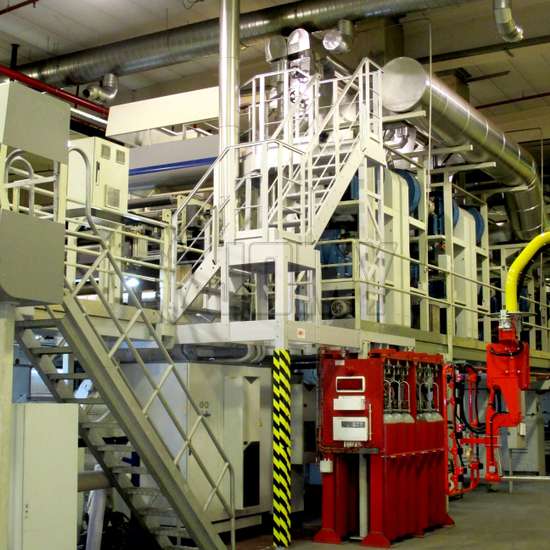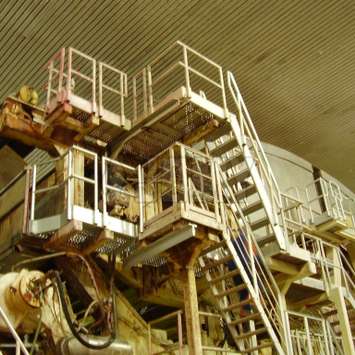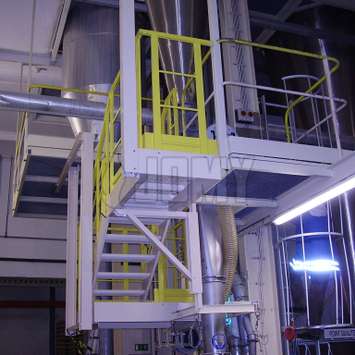Standard requirements for machinery access solutions
The standard requirement EN ISO 14122 is the most important design directive for our constructions in Europe. This norms describes the selection and specifications of resources needed for safe machine access.
In the U.S.A. all the JOMY constructions meet OSHA safety and health standards.
Standard requirements EN 14122
EN ISO 14122 is a major international safety standard related to "Safety of machinery - Permanent means of access to machines and industrial plants".
The sections of ISO 14122 describe the different types of access based on the elevation angle:
- ISO 14122-2: Working platforms and walkways provide safe access for angles of incline between 0° and 20° (preferred angle of incline between 0° and 10°).
- ISO 14122-3: Stairs provide safe access for angles of incline between 20° and 45°.
- ISO 14122-3: Stepladders provide safe access for angles between 45° and 75° (preferred angle of incline between 45° and 60°).
- ISO 14122-4: Fixed ladders provide safe access for angles of incline between 75° and 90°.
Please contact our engineering department for a detailed review of the technical requirements of ISO 14122 for your specific project.
Standard OSHA Requirements
Working on and around stairways and ladders can be dangerous. For example, stairways and ladders are major sources of injuries among construction workers. Many of these injuries are serious enough to require time off the job.
OSHA rules apply to all stairways and ladders used in construction, alteration, repair, painting, decorating, and demolition of worksites covered by OSHA’s construction safety and health standards. OSHA rules specify when employers must provide stairways and ladders. The standards require the following:
- When there is a break in elevation of 48cm or more and no ramp, runway, embankment, or personnel hoist is available, employers must provide a stairway or ladder at all worker access points.
- When there is only one point of access between levels, employers must keep it clear of obstacles to permit free passage by workers. If free passage becomes restricted, employers must provide a second point of access and ensure that workers use it.
- When there are more than two points of access between levels, employers must ensure that at least one point of access remains clear.
All JOMY products meet OSHA standards.





